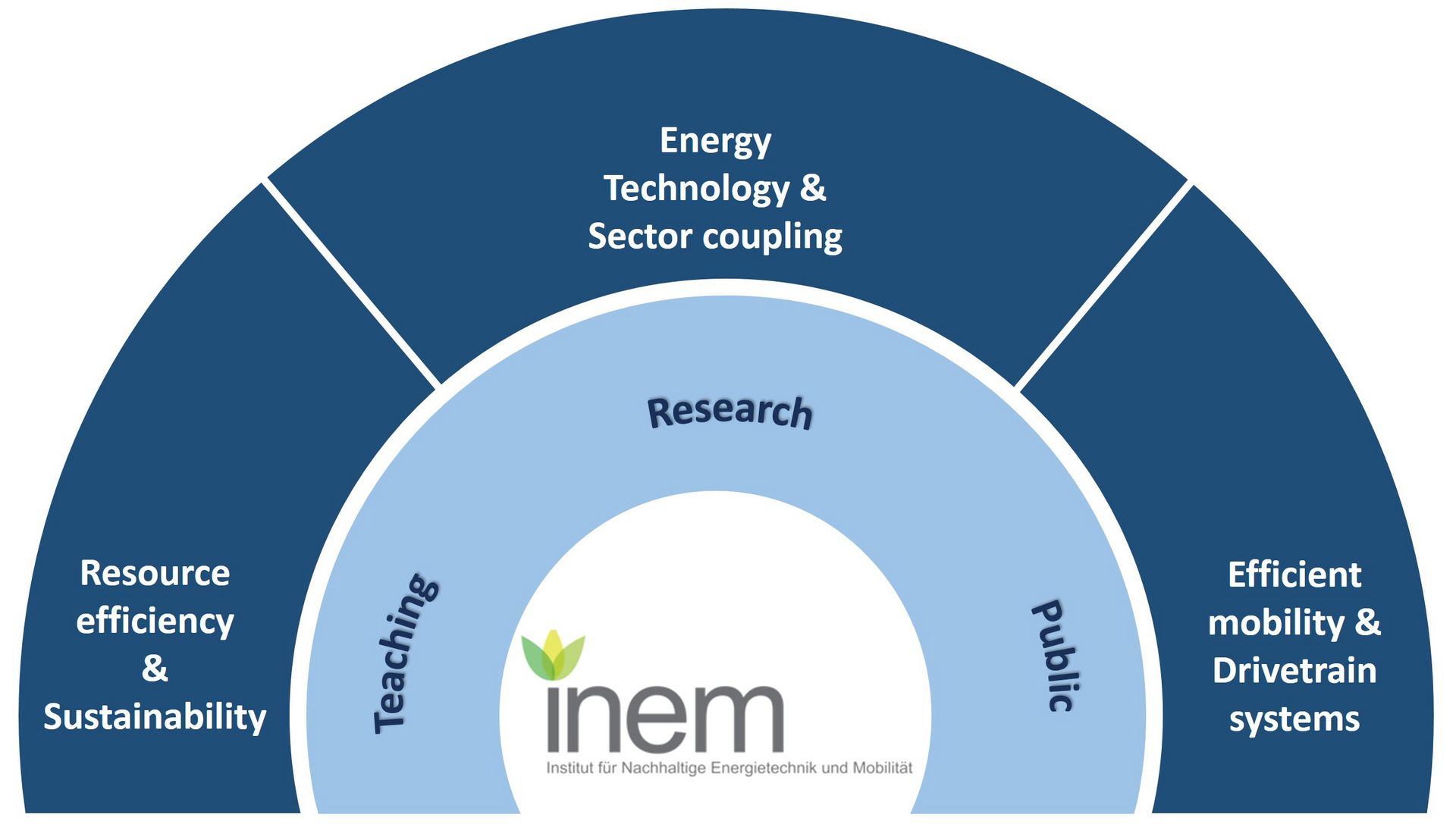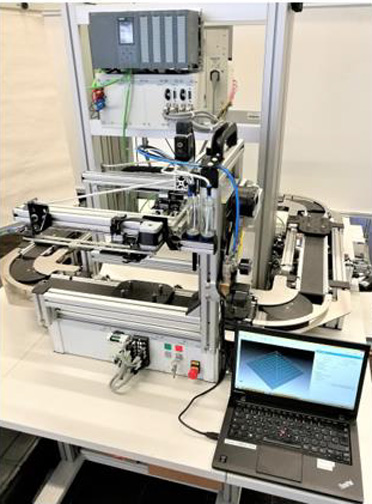Fields of activity
The Institute of Sustainable Energy Technology and Mobility at Esslingen University of Applied Sciences undertakes interdisciplinary work in the field of sustainable mobility and energy systems in the broadest sense.
INEM’s objective is to concentrate and enhance the know-how existing in all faculties in order to create a competence centre for Baden-Württemberg in this field.
Research at INEM
The ever greater effort being directed towards a sustainable future is leading to climate-friendly mobility concepts and sustainable energy systems becoming increasingly popular. The changes this entails present a great many challenges and the Institute for Sustainable Energy Technology and Mobility (INEM) takes up these challenges with its research activities. It conducts basic research and tackles real issues in the field of sustainable mobility and energy systems.
Current INEM research projects
Completed INEM research projects
Teaching at INEM
The Institute of Sustainable Energy Technology and Mobility is a research institution at Esslingen University of Applied Sciences and aims to introduce students to the latest technologies in sustainable energy management and mobility. This is achieved by means of:
Laboratory courses
The laboratory courses now being offered for the automotive engineering, mechanical engineering, and building services and environmental engineering degree programmes were redesigned in WS 2008/09. They are continually optimised in line with current research activities.
The below-listed laboratory experiments are currently being offered:
- Fuel cell test rig (stack characterisation)
- Fuel cell hybrid test rig
- Battery tests.
Project work and final theses
INEM sees itself as a cross-faculty institution and as such is open to all students who are interested in its work. Anyone interested in doing project work or their final thesis at INEM is welcome to contact the institute.
Examples of past project work, Bachelor and Master theses
Realisation of a semi-automatic coating process for low-temperature fuel cell membranes
Membrane fuel cells (PEM) have a number of advantages over the alkaline cells which have long been standard. Their membranes must be coated with catalytically active materials which are often based on expensive platinum. This process is not necessary when the advantages of the alkaline cell and the PEM cell are combined. The objective of the work was to automate the production of an anion-conducting membrane which could subsequently be used in a fuel cell. A semi-automatic membrane coating system was designed, built and optimised by means of spraying experiments.

Concept and design of a PEM high-pressure electrolyser stack
If the storage of hydrogen is to be cost effective compared to other energy storage concepts, the gas has to be compressed. Nowadays, it is normally compressed after the electrolysis stage by means of a compressor. To improve the overall efficiency, the need to compress the hydrogen with the compressor should be obviated and the compression achieved through the hydrogen generation process. The project objective was to design and build a PEM high- pressure electrolyser stack which would then be combined with a pressure vessel to produce and simultaneously compress hydrogen and oxygen.
Interested? Find out more! about our degree programmes
Explore now and
find a course

